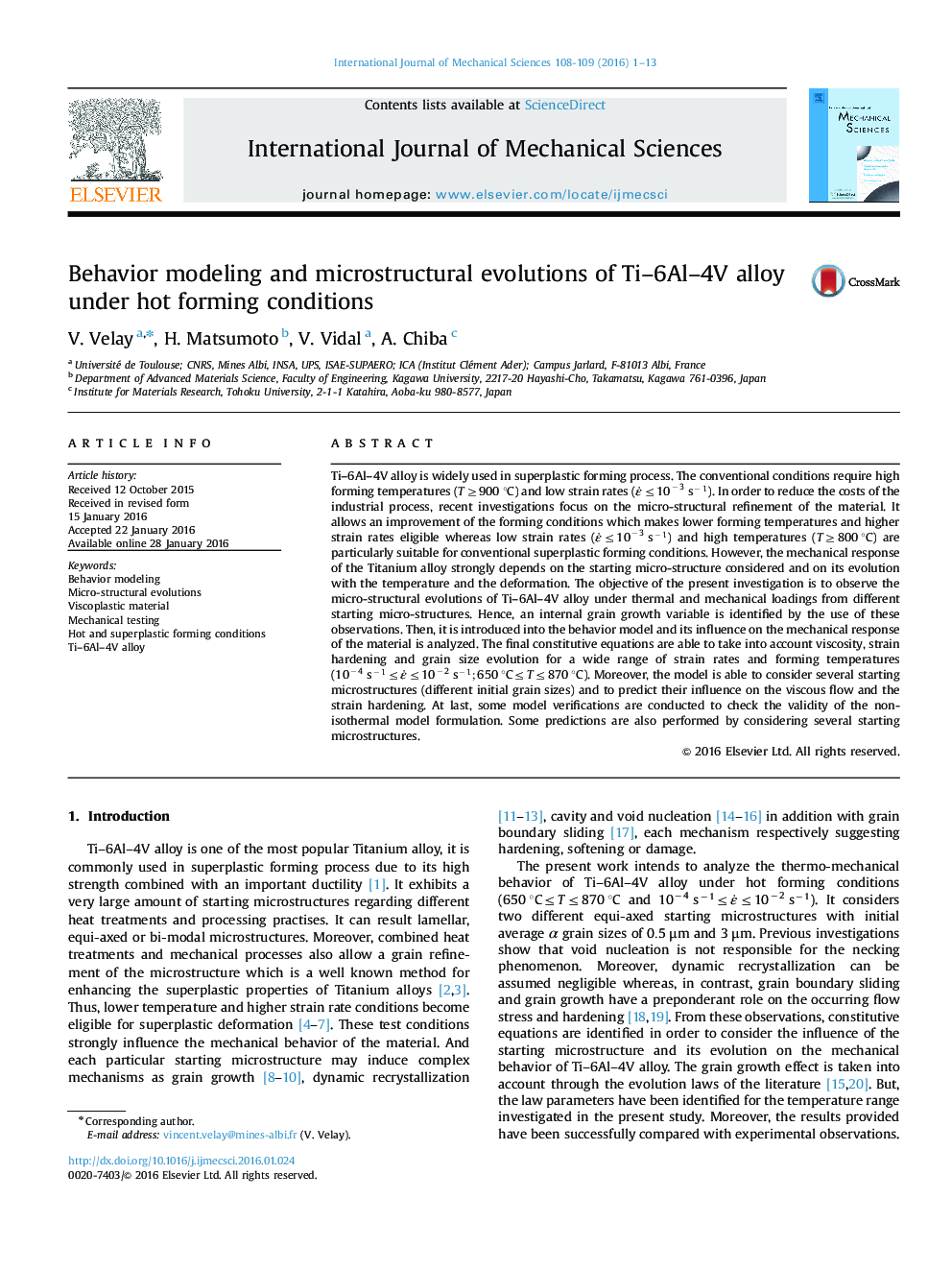| Article ID | Journal | Published Year | Pages | File Type |
|---|---|---|---|---|
| 780018 | International Journal of Mechanical Sciences | 2016 | 13 Pages |
•Mechanical behavior of Ti–6Al–4V alloy with different starting microstructures.•High temperature tensile testing under hot and superplastic forming conditions.•Grain growth evolution regarding the test conditions (temperature and de-formation).•Model formulation (grain growth effect, viscous flow and strain hardening).•Model verification and prediction (nonisothermal formulation, several grain sizes).
Ti–6Al–4V alloy is widely used in superplastic forming process. The conventional conditions require high forming temperatures (T≥900°C) and low strain rates (ε̇≤10−3s−1). In order to reduce the costs of the industrial process, recent investigations focus on the micro-structural refinement of the material. It allows an improvement of the forming conditions which makes lower forming temperatures and higher strain rates eligible whereas low strain rates (ε̇≤10−3s−1) and high temperatures (T≥800°C) are particularly suitable for conventional superplastic forming conditions. However, the mechanical response of the Titanium alloy strongly depends on the starting micro-structure considered and on its evolution with the temperature and the deformation. The objective of the present investigation is to observe the micro-structural evolutions of Ti–6Al–4V alloy under thermal and mechanical loadings from different starting micro-structures. Hence, an internal grain growth variable is identified by the use of these observations. Then, it is introduced into the behavior model and its influence on the mechanical response of the material is analyzed. The final constitutive equations are able to take into account viscosity, strain hardening and grain size evolution for a wide range of strain rates and forming temperatures (10−4s−1≤ε̇≤10−2s−1;650°C≤T≤870°C). Moreover, the model is able to consider several starting microstructures (different initial grain sizes) and to predict their influence on the viscous flow and the strain hardening. At last, some model verifications are conducted to check the validity of the non-isothermal model formulation. Some predictions are also performed by considering several starting microstructures.
Graphical abstractFigure optionsDownload full-size imageDownload as PowerPoint slide
